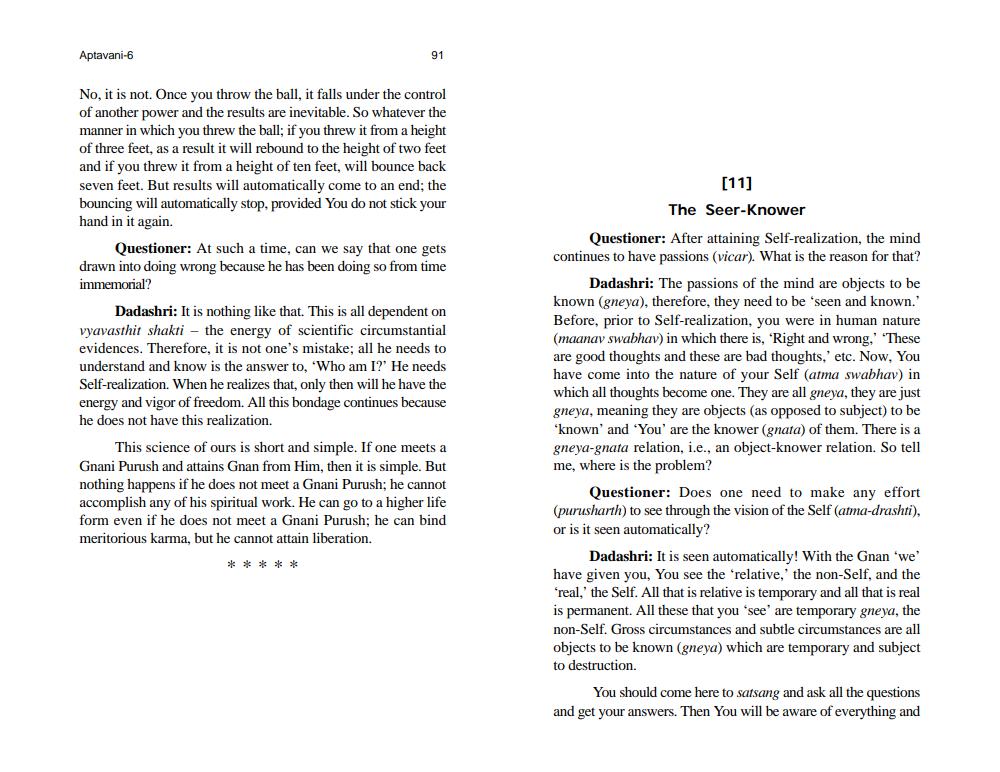________________
Aptavani-6
91
No, it is not. Once you throw the ball, it falls under the control of another power and the results are inevitable. So whatever the manner in which you threw the ball; if you threw it from a height of three feet, as a result it will rebound to the height of two feet and if you threw it from a height of ten feet, will bounce back seven feet. But results will automatically come to an end; the bouncing will automatically stop, provided You do not stick your hand in it again.
Questioner: At such a time, can we say that one gets drawn into doing wrong because he has been doing so from time immemorial?
Dadashri: It is nothing like that. This is all dependent on vyavasthit shakti - the energy of scientific circumstantial evidences. Therefore, it is not one's mistake; all he needs to understand and know is the answer to, 'Who am I?' He needs Self-realization. When he realizes that, only then will he have the energy and vigor of freedom. All this bondage continues because he does not have this realization.
This science of ours is short and simple. If one meets a Gnani Purush and attains Gnan from Him, then it is simple. But nothing happens if he does not meet a Gnani Purush; he cannot accomplish any of his spiritual work. He can go to a higher life form even if he does not meet a Gnani Purush; he can bind meritorious karma, but he cannot attain liberation.
[11]
The Seer-Knower Questioner: After attaining Self-realization, the mind continues to have passions (vicar). What is the reason for that?
Dadashri: The passions of the mind are objects to be known (gneya), therefore, they need to be seen and known.' Before, prior to Self-realization, you were in human nature (maanav swabhav) in which there is, 'Right and wrong,' "These are good thoughts and these are bad thoughts,' etc. Now, You have come into the nature of your Self (atma swabhav) in which all thoughts become one. They are all gneya, they are just gneya, meaning they are objects (as opposed to subject) to be "known' and 'You' are the knower (gnata) of them. There is a gneya-gnata relation, i.e., an object-knower relation. So tell me, where is the problem?
Questioner: Does one need to make any effort (purusharth) to see through the vision of the Self (atma-drashti), or is it seen automatically?
Dadashri: It is seen automatically! With the Gnan 'we' have given you. You see the relative,' the non-Self, and the 'real,' the Self. All that is relative is temporary and all that is real is permanent. All these that you 'see' are temporary gneya, the non-Self. Gross circumstances and subtle circumstances are all objects to be known (gneya) which are temporary and subject to destruction.
You should come here to satsang and ask all the questions and get your answers. Then You will be aware of everything and




